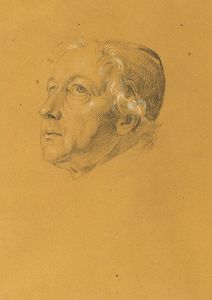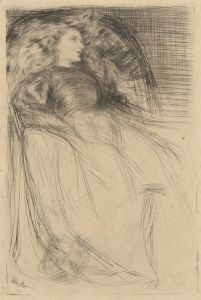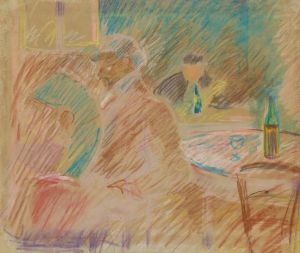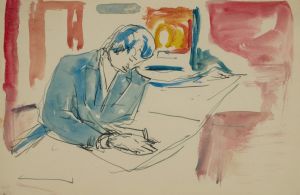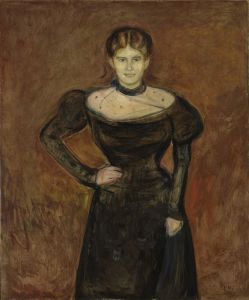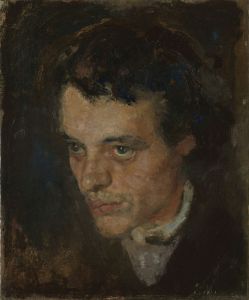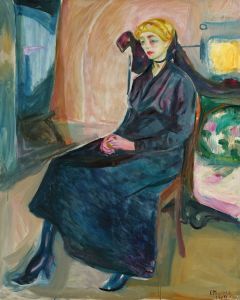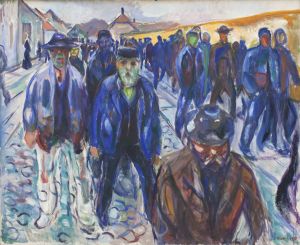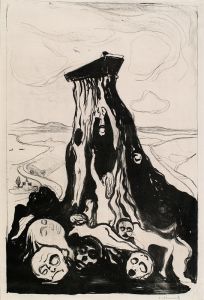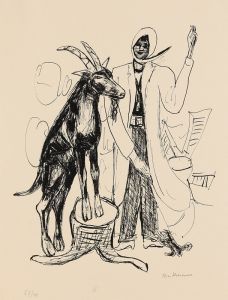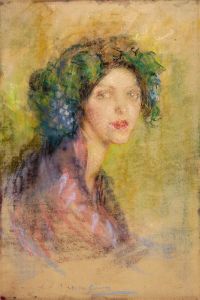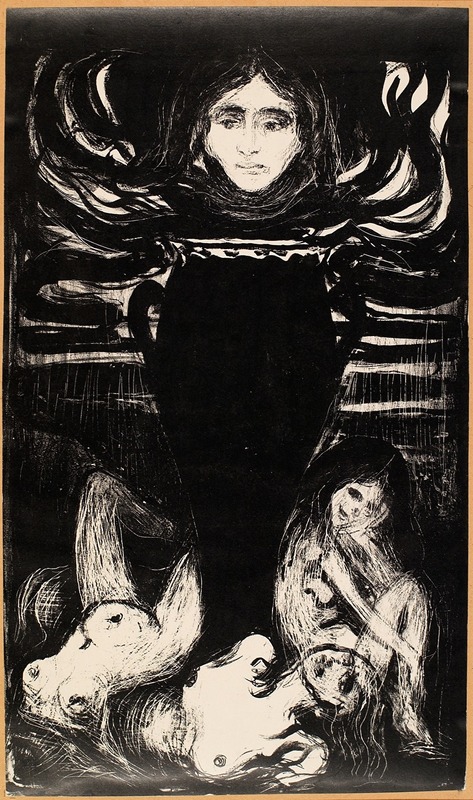
The Urn
A hand-painted replica of Edvard Munch’s masterpiece The Urn, meticulously crafted by professional artists to capture the true essence of the original. Each piece is created with museum-quality canvas and rare mineral pigments, carefully painted by experienced artists with delicate brushstrokes and rich, layered colors to perfectly recreate the texture of the original artwork. Unlike machine-printed reproductions, this hand-painted version brings the painting to life, infused with the artist’s emotions and skill in every stroke. Whether for personal collection or home decoration, it instantly elevates the artistic atmosphere of any space.
Edvard Munch, a Norwegian painter and printmaker, is renowned for his evocative and emotional works that often explore themes of existentialism, love, and death. One of his lesser-known works, "The Urn," reflects his distinctive style and thematic preoccupations. Although not as famous as "The Scream," "The Urn" is an important piece within Munch's oeuvre, showcasing his ability to convey complex emotions through symbolic imagery.
"The Urn" was created during a period when Munch was deeply engaged with Symbolism, an art movement that sought to express the ineffable and explore the realms of dreams, emotions, and spirituality. This painting exemplifies Munch's fascination with the human condition and his exploration of life's cyclical nature. The urn, a central motif in the painting, is a powerful symbol often associated with death, memory, and the passage of time. It serves as a vessel for the ashes of the deceased, representing the physical remains and the enduring presence of memory.
Munch's use of color and form in "The Urn" is characteristic of his broader body of work. His palette often includes muted tones and stark contrasts, which help to evoke a sense of melancholy and introspection. The composition of the painting may feature figures or landscapes that are rendered in a manner that emphasizes emotional resonance over realistic representation. This approach allows Munch to delve into the psychological and emotional states of his subjects, inviting viewers to engage with the painting on a deeper, more personal level.
Throughout his career, Munch was influenced by personal experiences and the cultural milieu of his time. He was deeply affected by the deaths of his mother and sister during his childhood, which left a lasting impact on his psyche and artistic vision. These experiences are often reflected in his work, where themes of loss, grief, and the fragility of life are prevalent. "The Urn" can be seen as a continuation of these themes, exploring the idea of mortality and the enduring nature of memory.
Munch's work was also shaped by his interactions with contemporary artists and intellectuals. He was part of the bohemian circles in Berlin and Paris, where he encountered Symbolist poets and painters who shared his interest in exploring the deeper aspects of human experience. These interactions enriched his artistic vocabulary and provided him with new avenues for expressing his ideas.
"The Urn" is a testament to Munch's ability to convey profound emotional truths through his art. While it may not be as widely recognized as some of his other works, it remains an important piece that reflects his ongoing exploration of the human condition. Munch's legacy as a pioneer of modern art is evident in his influence on subsequent generations of artists, who have drawn inspiration from his innovative approach to form, color, and subject matter.
In summary, "The Urn" by Edvard Munch is a significant work that encapsulates the artist's thematic concerns and stylistic innovations. Through its symbolic imagery and emotional depth, the painting invites viewers to reflect on the nature of life, death, and memory, offering a poignant glimpse into Munch's artistic vision.





